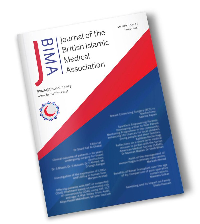
Javaid F1, Qureshi H2 , Abdul-Razakq H3,Yaqoob Z4, Wiley E5, Malik A6, Latif A7
1- Ophthalmology SHO , KSS. 2- GP ST3, Lincoln, 3-Trainee clinical scientist, Poole Hospital, Poole . 4-Medical student, University of Nottingham., 5-Microbiology Consultant, University College Hospital London. 6-Tutor in Sociology, University of Nottingham; 7-Director of Research, Bridge Institute, London, Senior Research Fellow, School of Health Sciences, University of Nottingham.
Abstract of poster which was presented at the BIMA National Conference , Birmingham 7th December 2019
Dress code may be a source of anxiety for some Muslim female healthcare professionals working in surgical theatres. In a survey conducted by the British Islamic Medical Association (BIMA) 50% of respondents had experienced problems wearing a headscarf in theatre, with over 30% reporting avoiding theatre attendance as a result and over 12% claiming the issue had impacted their career choice. Although there is no national policy addressing this, the 2010 Department of Health Uniform and Workwear Guidance does say ‘As far as possible, subject to the overriding requirements of patient safety and public confidence, staff should feel comfortable in their uniforms. This includes being able to dress in accordance with their cultural practices’. This survey investigates how many trusts made specific mention of policy regarding headscarf in theatre.
33 uniform policies were collected utilising 2 methods – an internet search engine to locate publicly available policies and the use of British Islamic Medical Association networks to improve coverage. They were then analysed to see if the uniform policy specifically mentioned headscarf in theatre.
Only 4 policies (11.8%) made mention of headscarves in theatre. Of these one said ‘use of headscarves is not permitted in theatre areas’ without stating an alternative; one suggested people could bring in their own, freshly washed navy blue or black headscarf; one suggested that headscarves must be completely covered with ‘protective headwear’ and one said headscarves must not be worn if the person is scrubbed but an ‘orthopaedic hood’ would be available if requested.
This suggests that there needs to be further work to encourage trusts to provide clear policy on headscarves in theatre. There appears to be significant variation in guidance provided by the four trusts in our survey without reference to an evidence base.

